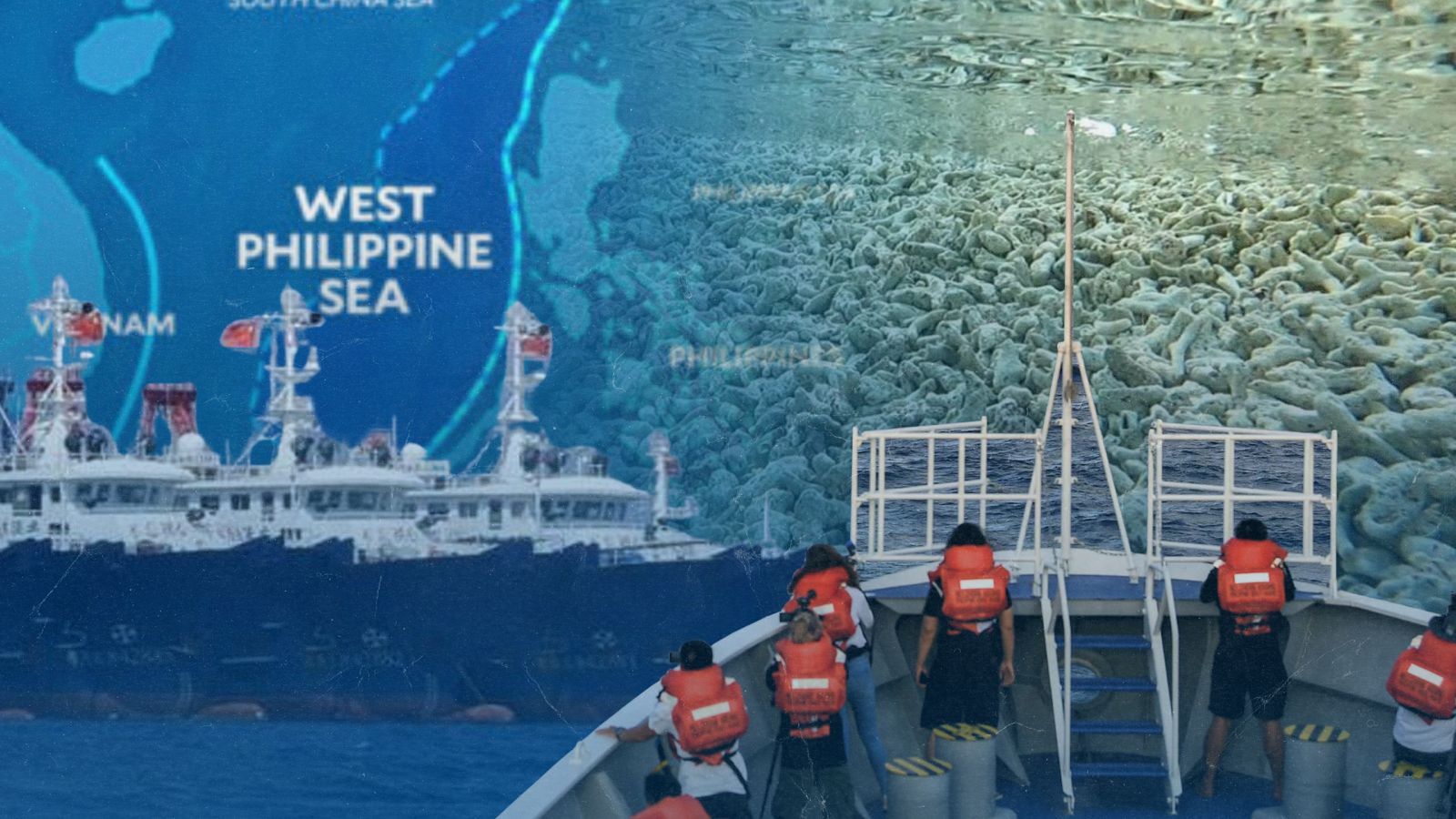MANILA, Philippines — A Chinese maritime militia ship “deliberately sideswiped” a Bureau of Fisheries and Aquatic Resources (BFAR) vessel on Oct. 11, a day after President Marcos raised Beijing’s aggression in the South China Sea with Chinese Premier Li Qiang during last week’s series of summits in Laos by the Association of Southeast Asian Nations (Asean).
The maritime militia ship with bow No. 00108 made dangerous maneuvers and tried to block the path of BRP Datu Cabaylo during the latter’s patrol in the vicinity of Pag-asa Island in the West Philippine Sea, BFAR said in a statement on Monday.
READ: Lawmaker slams Russia for blocking Asean’s South China Sea statement
“These dangerous maneuvers caused the sideswiping and collision with the BFAR vessel, which sustained minor dents in its starboard bow,” BFAR said.
The incident happened as the Datu Cabaylo and BRP Datu Sanday were approaching Pag-asa Cay 4 about 9 kilometers from the Philippine-occupied Pag-asa Island, according to BFAR.
Article continues after this advertisement
Despite the harassment, both Datu Cabaylo and Datu Sanday were able to complete their patrol and are now “safely docked” at Pag-asa’s sheltered port, the agency said.
Article continues after this advertisement
“We commend the officers and crew of the BRP Datu Cabaylo (MMOV 3001) as they continue to perform their duty, in line with the mandate of BFAR, to uphold Philippine jurisdiction and rights over its territorial waters and exclusive economic zone,” BFAR said.
Water cannon attacks
Three days before that incident, the Datu Cabaylo also experienced water cannon attacks from China Coast Guard (CCG) vessels at Panatag (Scarborough) Shoal.
The CCG vessels also “approached at a close distance and shadowed” the movements of the Datu Cabaylo and Datu Sanday.
On Aug. 25, five CCG vessels fired water cannons at the Datu Sanday and rammed it six times near Escoda (Sabina) Shoal in the West Philippine Sea.
On Aug. 31, a CCG ship “intentionally and repeatedly” rammed one of the Philippines’ biggest coast guard vessels at Escoda, the BRP Teresa Magbanua (MRRV 9701), as Beijing tried to drive Filipinos away from the shoal.
A month later, a Chinese Navy missile boat directed a laser at a BFAR aircraft conducting maritime surveillance near Hasa-Hasa (Half Moon) Shoal, 111 km off Palawan province.
The incident happened on Sept. 27 while a BFAR Cessna patrol aircraft spotted a CCG vessel with bow No. 21555 and two navy Type 22 Houbei-class missile boats chasing two BFAR vessels (BRP Taradipit and BRP Romapenet) also near Hasa-Hasa.
The next day, a Chinese helicopter harassed BFAR’s BRP Datu Romapenet, flying close to the ship during its resupply mission near Bombay Shoal.
Continued swarming
Chinese warships and coast guard vessels continue to swarm Escoda, Panatag and Ayungin (Second Thomas) Shoals, Col. Francel Margareth Padilla, Armed Forces of the Philippines spokesperson, said on Tuesday.
“Their continued illegal presence in the West Philippine Sea blatantly disregards the 2016 arbitral tribunal ruling and violates our sovereignty and sovereign rights,” Padilla said in a statement.
She said the continued swarming of Chinese vessels in the West Philippine Sea highlights the AFP’s need to continue modernizing its defense and security capabilities.
“We in the AFP remain committed to upholding international law and defending the integrity of our national territory,” she said.
During the summits in Laos, Marcos told a closed-door session that Asean cannot “turn a blind eye to the aggressive, coercive, and illegal actions of an external power” in the South China Sea, since its silence “diminishes” the regional bloc.
A diplomat there also quoted the Philippine leader as telling China’s Li that “you cannot separate economic cooperation from political security”—in reference to China’s economic agenda in Asean, as opposed to its maritime actions.
Suggested donation
Meanwhile, a lawmaker asked the United States to consider donating a warship set to be inactivated in 2025.
In a letter addressed to US Secretary of State Antony Blinken, Defense Secretary Lloyd James Austin III and US Ambassador to Manila MaryKay Carlson, Cagayan de Oro Rep. Rufus Rodriguez asked whether USS Philippine Sea (CG-58), a guided missile cruiser on active service only until next year, could be donated to the country as a “gesture” of the US’ “iron-clad commitment and friendship” with the Philippines.
Rodriguez said the warship named after the Battle of the Philippine Sea during World War II could be used to augment Navy and Coast Guard patrols around the archipelago, including the West Philippine Sea.—with reports from Krixia Subingsubing and Inquirer Research
For comprehensive coverage, in-depth analysis, visit our special page for West Philippine Sea updates. Stay informed with articles, videos, and expert opinions.





































